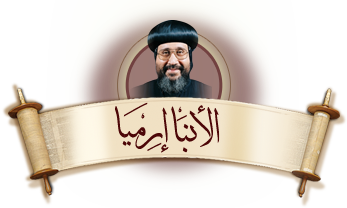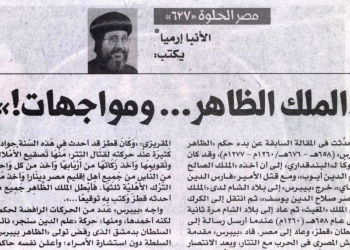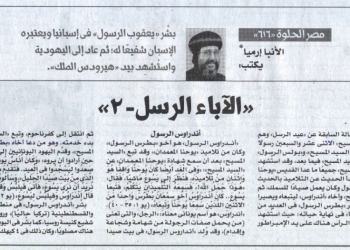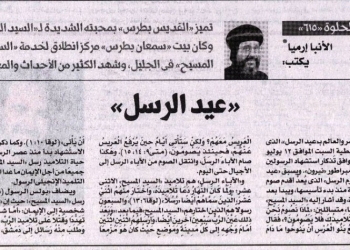We stopped at Emperor Constantine, the son Constantius who ruled the western Roman Empire. In 306, the army declared Constantine Emperor on the Gaul, Britain, and Spain after his father’s death. Then, civil wars broke out between Constantine and Maxentius and Licinius to become the sole ruler after a time of a four-man rule.
The Byzantine Empire
Historians believe that the true onset of the Byzantine Empire in the East coincides with that of Constantine’s tenure solely in 323 A.D. Constantine is the first Roman Emperor to legalize Christianity in the Edict of Milan which was issued in 313 A.D. which stated that Christians should be allowed to follow the faith without oppression. This is a great transformation in Christianity which had been persecuted by former emperors, the worst of whom was Diocletian whose era is the worst martyrdom era. Constantine did not only legalize Christianity, but also put it under the Roman State’s protection.
Constantine attended to the State and the government. Likewise, he gave attention to the states affiliated to the Empire; so, he cared about applying the law and justice amongst the Empire’s subjects.
He divided the country administratively into four sections, and assigned their affairs to his three sons and cousin, following them up as head. So, it prospered. Also, Constantine attended to the army’s affairs, divided it into legions each of which was led by a prince. Historians write that this system had a positive aspect, namely, having every commander care about his legion, which made the Emperor control the army’s affairs. Yet, it had a negative aspect: owing to the multitudinous internal and external wars, the number of citizens who joined the army dropped, which led to the conscription of strangers. This harmed the country and the people a lot.
Constantine loved the Christian clergy. He respected bishops and liked to meet them. Likewise, he gave them the rights enjoyed by pagans. They were exempted from taxes. One historians maintains that he made Sundays days off and holidays in which prayers are conducted throughout the Empire, which has lasted ever since. Moreover, he decreed the building of churches throughout the Empire, such St. Peter’s Church in Rome, the Nativity Church in Bethlehem, annulling the celebrations of Venus and demolishing its temples.
In 326, he sent Helen, his mother to Jerusalem escorted by about three thousand soldiers. There they discovered the holy Cross. She made it a cover of pure gold, then had several churches established among which is the Resurrection Church.
Worthy mentioning is that Emperor Constantine cared about the boom of arts and sciences, exempting their scholars from taxes and granting them the privileges of the military. Likewise, he ordered the ceasing of wrestling in which humans fought one another to death.
Constantinople
He established in 330. Historians point out that when Constantine entered Rome as emperor, he was not properly received by the population. They used to mock him for protecting and loving Christians. So, he decided to build a new city to be his and the government’s headquarters. This is Constantinople.
Constantinople was established on the ruins of Byzantium which was built by some Greek merchants. It was called after a maritime commander called Byzas. It became an important trade centre due to its unique position between Asia and Europe.
Constantinople is located in a safe spot and triangular in shape. It is fortified in such a way that it cannot be reached by land except from one direction: the link between the Black and the Mediterranean Seas, and an intersection point between Asia and Europe. It was coveted by many powers: for it was the greatest of the medieval cities.
Transferring the Roman capital to the East is considered a turning point: for it made the Empire focus on the East which is full of economic and human resources. Also, this alleviated the attacks of the Germanic tribes on Rome and resisted Persian attacks on the Empire’s states.
Constantine set the new capital to replace Rome in everything: by establishing a senate, building great edifices, halls, squared, and gardens. Likewise, he built lots of churches.
By the end of Constantine’s tenure, Persians raided the Roman provinces in the East. So, he mobilized armies to fight them. When Constantine died at Nicomedia, he was placed in a golden coffin and carried to Constantinople to be buried.
Egypt
The Byzantine rule of Egypt is an extension of the Roman rule. Some annex it to the Roman period, while others consider separate due to the dramatic religious changes that took place therein. With Constantine’s tenure, a great religious transformation took place in Egypt: for ancient Egyptian worship was changed to Christianity after the end of the harsh era of persecution which the Copts witnessed.
Constantine gave special attention to Egypt’s affairs: the people and government. He appointed a general tetrarch to follow up the affairs of the Roman provinces in the East. He called him the Count of the East. Yet, there was a splitting between civil and military authorities which were led by a special commander directly reporting to the Roman State.
A nomarch or “ruler of Egypt” used to be appointed. Noteworthy is that other rulers bore the title of “proconsul” in order to make Egypt distinct from the rest of the provinces. The ruler of Egypt was assigned the affairs of architecture, the Nile’s conditions, agriculture and irrigation, sailing through the Nile, as well as transferring crops from Egypt to Constantinople.
However, the nomarch and the governors of Egypt’s nomes were not on good terms: for they never obeyed him. This resulted in instability. In effect, Emperors tried to change the names of Egypt’s nomes, dividing her, and increasing the number of officials there in order to control the country. This led to the spreading of injustice and the increase of the Egyptians’ hatred for the government due to the deterioration of the country’s affairs, extravagant taxes, as well as tumult which affected the country’s productivity.
Senates followed up the public as well as the financial affairs of the country. Egypt maintained her international position in trade between East and West. Alexandria remained the greatest industrial center therein.
Emperor Constantine ordered that several churches be built in Egypt as well as restoring the damaged ones. This era had two main characteristics:
First: Monasticism
It was initiated by St. Antony, the father of monks and spread from Egypt to the four corners of earth. Monasticism is the most important Christian order that Egypt presented to the world. One historian asserts that, “Christianity has an ascetic feature. That is why monasticism made its debut in the Egyptian Church at quite an early stage. They struggled against carnal desires, the ego’s evil whims… We have to note that they did not try to protect themselves through a selfish seclusion. In fact, they did pray a lot for others. Such prayers constituted an effective weapon in the harsh struggles that the Church went through against evil powers. The monks bravery and asceticism made them admired by people thousands of whom followed suit, heading from remote places like Gaul, Italy, and Spain in order to see those strugglers and talk to them.” At that many Christian thinkers appeared in Egypt.
Second: Literature
The Coptic language, which is the final stage of progress of the ancient Egyptian language, made its debut: through Hieroglyphics, Hieratic, and Demotic. Before the end of the fourth century A.D., the Egyptians had the entirety of the Bible translated. Likewise, Coptic literature had a diversity of subjects: theological, biblical explication, and ritualistic. One historian maintains that through such literature, “Egyptians found a realm for self-expression for the first time during the third century A.D. Thus, monasticism and Coptic language gave the Egyptian Church a strong national mark.”
The Council of Nyssa- 325 A.D.
The Church of Alexandria played a major role in preserving faith when conflicts and schisms in creed occurred. This made Emperor Constantine call for an ecumenical council in Nyssa in 325 to discuss these issues. The Church of Alexandria played a great role in that council owing to the presence of Pope Alexandros, the 19th patriarch, and his disciple, Athanasius who was to succeed him. What an interesting story! Such stories never end in Beautiful Egypt.
General Bishop
Head of the Coptic Orthodox Cultural Center


 العربية
العربية











